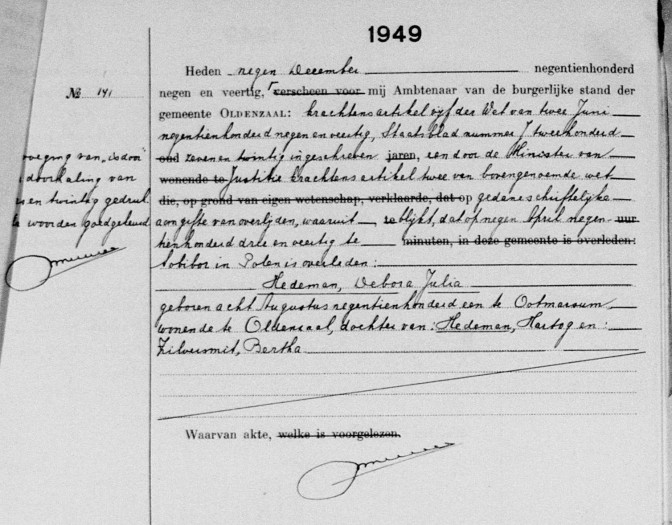If a person died in a different location than where he lived, the civil registration of his place of residence would also record his death. Often, they would receive a copy of the death record that was created in the place of death, and would then record that copy in their own death registers.
This was also done after World War II, to record all the Dutch Jews who were murdered in Eastern Europe. Sometimes it took many years to find out where and when a person died, so many towns have death records for Jewish holocaust victims that continue to the late 1950s.

Death record of Debora Julia Hedeman, died Sobibor, 9 April 1943. 1
- Oldenzaal, death record 1949 no. 141, Debora Julia Hedeman, 9 December 1949; consulted as “Netherlands, Overijssel Province, Civil Registration, 1811-1960,” digital images, Familysearch (http://familysearch.org : accessed 15 November 2015).


That’s a sad but touching article about acknowledging the persons who were hounded and killed during that horrible time in world history….obviously can’t bring them back, but at least they can be acknowledged as people who existed…Jerri
How does it work for those who died in another country as immigrants? Were there any documents sent back to their native country?
Emigrants would no longer be residents in the Netherlands, so their death records would not have been sent back. But for Dutch residents who died abroad, there should be a death record in the civil registration of the municipality where they lived.